 Home
Home
40-Hour HAZWOPER Worker
Click to sign up forour E-Newsletter

Jump To Section
Open Enrollment Seminars | Regulation | Other Course Options | Individual Products
Course Regulation
29 CFR 1910.120:- (e)(1)(i): All employees working on site (such as but not limited to equipment operators, general laborers and others) exposed to hazardous substances, health hazards, or safety hazards and their supervisors and management responsible for the site shall receive training meeting the requirements of this paragraph before they are permitted to engage in hazardous waste operations that could expose them to hazardous substances, safety, or health hazards, and they shall receive review training as specified in this paragraph.
- (e)(3)(i): General site workers (such as equipment operators, general laborers and supervisory personnel) engaged in hazardous substance removal or other activities which expose or potentially expose workers to hazardous substances and health hazards shall receive a minimum of 40 hours of instruction off the site, and a minimum of three days actual field experience under the direct supervision of a trained experienced supervisor.
- (e)(3)(ii): Workers on site only occasionally for a specific limited task (such as, but not limited to, ground water monitoring, land surveying, or geophysical surveying) and who are unlikely to be exposed over permissible exposure limits and published exposure limits shall receive a minimum of 24 hours of instruction off the site, and the minimum of one day actual field experience under the direct supervision of a trained, experienced supervisor.
- (e)(3)(iii): Workers regularly on site who work in areas which have been monitored and fully characterized indicating that exposures are under permissible exposure limits and published exposure limits where respirators are not necessary, and the characterization indicates that there are no health hazards or the possibility of an emergency developing, shall receive a minimum of 24 hours of instruction off the site, and the minimum of one day actual field experience under the direct supervision of a trained, experienced supervisor.
- (e)(3)(iv): Workers with 24 hours of training who are covered by paragraphs (e)(3)(ii) and (e)(3)(iii) of this section, and who become general site workers or who are required to wear respirators, shall have the additional 16 hours and two days of training necessary to total the training specified in paragraph (e)(3)(i).
- Equivalent Training: Employers must be able to show by documentation or that the employees work experience and/or training has resulted training equivalent to that training required in paragraphs (e)(1) through (e)(4) of 29 CFR 1910.120 shall not be required to provide the initial training of those paragraphs to such employees and shall provide a copy the certification or documentation to the employee upon request.
However, certified employees or employees with equivalent training new to a site shall receive appropriate, site specific training before site entry and have appropriate supervised field experience at the new site. Equivalent training includes any academic training or the training that the employee might have already received from actual hazardous waste site work experience.

- Please note that the regulation also requires a minimum of three days actual field experience under the direct supervision of a trained, experienced supervisor. Employees shall be able to demonstrate the following in accordance with 29 CFR 1910.120 (e)(2)(i) - (e)(2)(vii): Names of personnel and alternates responsible for site safety and health; Safety, health and other hazards present on the site; Use of PPE required on the site; Work practices by which the employee can minimize risks from site hazards; Safe use of engineering controls and equipment on the site; Medical surveillance requirements including recognition of symptoms and signs which might indicate over exposure to hazards; The contents of paragraphs (G) through (J) of the site safety and health plan set forth in paragraph (b)(4)(ii) of this section.
- The training shall establish employee proficiency in the duties required by this regulation and shall introduce new or revised procedures, as necessary, for compliance with this regulation.
- Upon successful completion of this course, students will be issued New Environment, Inc's. "40-Hour Hazardous Waste Worker" Certification.
The Following Topics are Covered in this Course
- History Of The Law
- Regulatory Overview
- Poisons
- Chemical Exposure
- Hazard Assessment
- Fires And Explosions
- Reference Material
- Oxidizers
- Oxygen Deficiency
- Ionizing Radiation
- Potential Site Hazards
- Heat Stress
- Cold Exposure
- Noise Exposure
- OSHA 1910.146
- Planning And Organizing
- ERGB Exercise
- Training
- Medical Surveillance
- Site Characterization
- Air Monitoring
- Self-Contained Breathing Apparatus
- Supplies-Air Respirators
- Air-Purifying Respirators
- Fit Test Procedures
- Chemical Protective Clothing
- Site Control
- Decontamination Techniques
- Drums & Containers
- Site Emergencies
- Haz. Material Terminology
- Review And Final Test
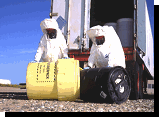
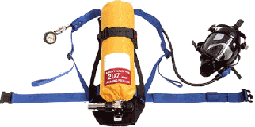

In addition to the in-class training, students must accomplish an out-of-class study using the "Occupational Safety and Health (OSHA) Guidance Manual for Hazardous Waste Site Activities" and Homework booklet.
Open Enrollment Seminars
This class is not scheduled for any upcoming seminars. It is available for On-Site Training, Call or E-mail us to schedule a seminar.
Optionally, you can purchase the On-Site Training Seminar Kit below.
Other Course Options
Seminar Kits for Instructors$999.00 Add To Cart
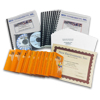
Class Hours: 24 in class, 8 homework, 8 hands on
Regulation: 29CFR 1910.120 (e)(1)
- 1 - Easy to Use Color Instructor Lesson Plan
- 10 - Student Workbooks
- 10 - Student Tests
- 10 - Student Certificates
- 10 - DOT Emergency Response Guidebooks
- 1 - Course PowerPoint® with Regulations
- Course Videos - Over Two Dozen Safety Titles to Supplement Your Training
- This kit can also be used to complete the 24-Hour ER Technician (1910.120 (q)) classroom training.
$55.50 Add To Cart
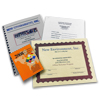
Additional student packs can be purchased to include:
- 1 - Student Workbook
- 1 - Student Test
- 1 - DOT Emergency Response Guidebook
- 1 - Course Certificate
Online Couse Options
$295.00 Add To Cart

This self-study program is intended for the exclusive use of "Qualified" individuals who can show by documentation or certification that their work experience and/or training has resulted in "at least 16 hours" of training equivalent to that training required in paragraphs (e)(1) through (e)(4) of 29 CFR 1910.120. Such training must include hands on PPE instruction utilizing Chemical Protective Clothing and any respirators or other equipment the student is expected to utilize as part of their job function.
Examples of "Qualified" individuals include: Prior experience in Occupational Safety and Health or hazardous waste operations or emergency response, or an Associate's or Bachelor's Degree in a physical or natural science or engineering, with course work in chemistry.
This online course has physical materials that must be shipped to the student.
Program Includes
- Module 1: Course Introduction
- 29CFR 1910.120 Regulation In PDF Format
- Module 2: History Of The Laws
- Module 3: Introduction To Industrial Toxicology
- Module 4: Chemical Exposure
- Module 5: Hazard Assessment
- Module 6: Fire and Explosion
- Module 7: Reference Material Overview
- Module 8: Reference Material Exercise
- Module 9: Oxidizer Exercise
- Module 10: Oxygen Deficiency
- Module 11: Ionizing Radiation
- Module 12: Potential Site Hazards
- Module 13: Heat Stress
- Module 14: Cold Exposure
- Module 15: Noise Exposure
- Module 16: OSHA Standard 1910.146
- Module 17: Planning and Organizing
- Module 18: Collecting Hazard Exercise
- Module 19: Training
- Module 20: Medical Monitoring
- Module 21: Site Characterization
- Module 22: Air Monitoring
- Module 23: Self-Contained Breathing Apparatus
- Module 24: Supplied-Air Respirators
- Module 25: Air-Purifying Respirators
- Module 26: Respirator Fit Testing
- Module 27: Chemical Protective
- Module 28: Site Control
- Module 29: Decontamination
- Module 30: Drums and Containers
- Module 31: Site Emergencies
- Module 32: Hazard Communications Glossary
- Module 33: Attachments
- Module 34: Homework Review
- 1 - Hazardous Waste Worker Student Workbook
- 1 - OSHA Manual For Hazardous Waste Site Activities
- 1 - Homework Booklet
- 1 - Emergency Response Guidebook
- 1 - NIOSH Pocket Guide To Chemical Hazards
- 1 - Hazardous Materials Compliance Pocketbook
View the online course requirements on our Online Courses Page.
On-Site Training
New Environment, Inc. offers On-Site Training for this course, call or E-mail us to schedule this course.
Products for this Course
Instructor Materials
$425.00 Add To Cart
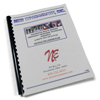
The Following Topics are Covered in this Course
- History Of The Law
- Regulatory Overview
- Poisons
- Chemical Exposure
- Hazard Assessment
- Fires And Explosions
- Reference Material
- Oxidizers
- Oxygen Deficiency
- Ionizing Radiation
- Potential Site Hazards
- Heat Stress
- Cold Exposure
- Noise Exposure
- OSHA 1910.146
- Planning And Organizing
- ERGB Exercise
- Training
- Medical Surveillance
- Site Characterization
- Air Monitoring
- Self-Contained Breathing Apparatus
- Supplies-Air Respirators
- Air-Purifying Respirators
- Fit Test Procedures
- Chemical Protective Clothing
- Site Control
- Decontamination Techniques
- Drums & Containers
- Site Emergencies
- Haz. Material Terminology
- Review And Final Test
$425.00 Add To Cart
 Fully editable PowerPoint presentation for 40-Hour HAZWOPER Worker
Fully editable PowerPoint presentation for 40-Hour HAZWOPER Worker
Student Material
$49.50 Add To Cart
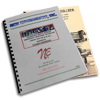
Student Material Includes:
- Student Background Survey
- Student Classroom Workbook
- OSHA Guidance Manual
- 50 Question Final Test
- Participant Evaluation Form
- 2-Prerequisite Test
- Student Homework Booklet
- NFPA 704 Wallet Card
- Certificate Of Completion*
$6.00 Add To Cart

This Guidebook is primarily a guide to aid first responders in quickly identifying the specific or generic hazards of the material(s) involved in the incident, and protecting themselves and the general public during the initial response phase of the incident.
The Emergency Response Guidebook is updated every three to four years to accommodate new products and technology.
Use this DOT-issued guidebook to help you satisfy DOT's requirement that Hazmat shipments be accompanied by emergency response information (49 CFR Section 172.600).
View the 2024 Emergency Response Guidebook Summary of Changes from 2020.
Published by the U.S. Department of Transportation. 4"x5.25" Pocket Version
$22.50 Add To Cart
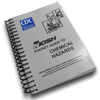
The NIOSH Pocket Guide to Chemical Hazards presents key information and data in abbreviated or tabular form for chemicals or substance groupings (e.g. cyanides, fluorides, manganese compounds) commonly found in the work environment. With this handy book you'll find information on recommended exposure limits, permissible exposure limits, chemical and physical properties, health hazards and personal protection for 677 chemicals regulated at the federal level.
- Most Current Printing/Revision Date.
- New layout for the Chemical Listing section, each chemical arranged in its own table.
- Expanded Chemical, Synonym and Trade Name Index.
- Conversion factors, Chemical Abstracts Service Registry Number and The Registry of Toxic Effects of Chemical Substances.
- Updated DOT ID and Guide Numbers to reflect changes made by DOT in the 2016 Emergency Response Guidebook.
- NIOSH Recommended Exposure Limits (NIOSH RELs).
- Occupational Safety and Health Administration Permissible Exposure Limits (OSHA PELs).
- NIOSH Immediate Dangerous to Life and Health values (NIOSH IDLHs).
- A physical description of the agent with chemical and physical properties.
- Measurement methods.
- Personal Protection and Sanitation Recommendations.
- Particulate respirator recommendations revised to include Part 84.
- Information on Health Hazards including: Route, Symptoms, First Aid and Target Organ information.
- Revised Appendix E to include OSHA respirator requirements for hazardous substances identified in the preamble to the OSHA Respiratory Protection Standard (29 CFR 1910.134).